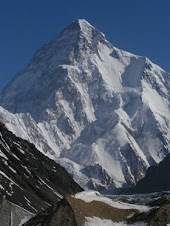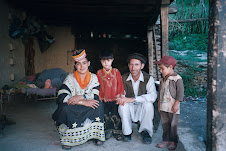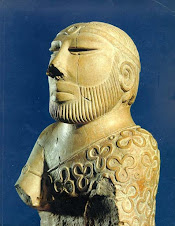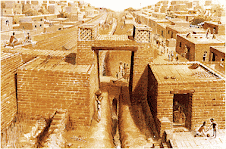The Hindu Kush (or Hindukush) is the main mountain range in Afghanistan. It is the westernmost extension of the Pamir Mountains, the Karakoram Range, and the Himalayas.
The origin of the term Hindu Kush (which translates as "Indian Killer") is a point of contention. Four possibilities have been put forward:
that the name refers to the last great 'killer' mountains to cross when moving between the Afghan plateau and the Indian subcontinent, named after the toll it took on anyone crossing them;
that the name is a corruption of Hindu Koh, from the Iranian word Koh, meaning mountain;
that the mountains memorialize the Indian captives who perished in the mountains while being transported to Central Asian slave markets;
that the name is a posited Avestan appellation meaning "water mountains."
The mountain peaks in the eastern part of Afghanistan reach more than 7,000 meters. The highest of these is Tirich mir 7,011 m.The Pamir mountains, which Afghans refer to as the "Roof of the World", extend into Tajikistan, China and Kashmir.
Eastern Hindu Kush.
The Eastern Hindu Kush range, also known as the High Hindu Kush range, is mostly in northern Pakistan and the Nuristan and Badakhshan.
Badakhshan
Badakhshan is a region comprising parts of northeastern Afghanistan and southeastern Tajikistan. Badakhshan Province is one of the thirty-four provinces of Afghanistan.
Chitral District.
Chitral is a Districts of Pakistan in the North-West Frontier Province of Pakistan that contains the town of Chitral. It has an area of 14,850 km? and a population of 318,689 at the 1998 Census, which had subsequently risen to about 378,000 people by 2004.
Tirich Mir
Tirich Mir is the highest mountain in the Hindu Kush region of northern Pakistan, and the highest mountain indisputably in Pakistan .The mountain was first climbed in 1950 by a Norway expedition.
Noshaq
Noshaq is the highest mountain in Afghanistan and the second highest independent peak of the Hindu Kush after Tirich Mir . Noshaq is located in the northeastern corner of the country along the Durand line which marks the border with Pakistan.
The range also extends into Ghizar, Yasin Valley.
Yasin Valley
Yasin Valley is a high mountain valley in the Hindu Kush mountains, in the northwest region of Gilgit District in Pakistan.
Ishkoman
Ishkoman is a high mountain valley in the Hindukush and Karakorum mountains, in the northwest region of Gilgit District.
Chitral.
Chitral is considered to be the pinnacle of the Hindu Kush region. The highest peaks, as well as countless passes and massive glaciers, are located in this region. The Chiantar, Kurambar, and Terich glacierGlacier
A glacier is a large, slow-moving mass of ice, formed from compacted layers of snow, that slowly deforms and flows in response to gravity and high pressure....
s are amongst the most extensive in the Hindu Kush and the meltwater from these glaciers form the Kunar RiverKunar River
The Kunar River is about 480 km long, located in eastern Afghanistan and north-western Pakistan. The Kunar river system is fed from melting glaciers and snow of the Hindu Kush mountains.
which eventually flows south into Afghanistan and joins the Bashgal, Panjsher, and eventually the much smaller Kabul RiverKabul River
Kabul River , classically called the Cophes , is a river that rises in the Sanglakh Range in Afghanistan, separated from the watershed of the Helmand River by the Unai Pass.
The jazz musician Katie MeluaKatie Melua
Ketevan "Katie" Melua is a Georgian people/United Kingdom singer, songwriter and musician. She was born in Georgia , but moved to Northern Ireland at the age of eight and then relocated to England at the age of 14....
wrote a song called "Halfway Up the Hindu Kush", probably because in the 1960s and 70s Afghanistan was depicted in the media as the romantic haven of nomads and a resort for hashish-smoking hippies.
Tuesday 24 November 2009
Subscribe to:
Post Comments (Atom)








.gif)

No comments:
Post a Comment